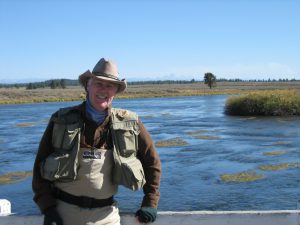Henry’s Fork 9-3-19
Flying ants have arrived along the upper river, so add these to the grasshopper abundance, and terrestrial insect patterns of these should accompany your visit to this part of the river. Mayflies activity is reduced to a spotty trico emergence with some speckled duns thrown in. Caddis are still active here, but seem to be less in favor than especially ants according to resident trout (and whitefish). As always occurs this time of year, extensive weed beds put some limits on wet fly fishing and make escape havens for large hooked trout (and whitefish).


